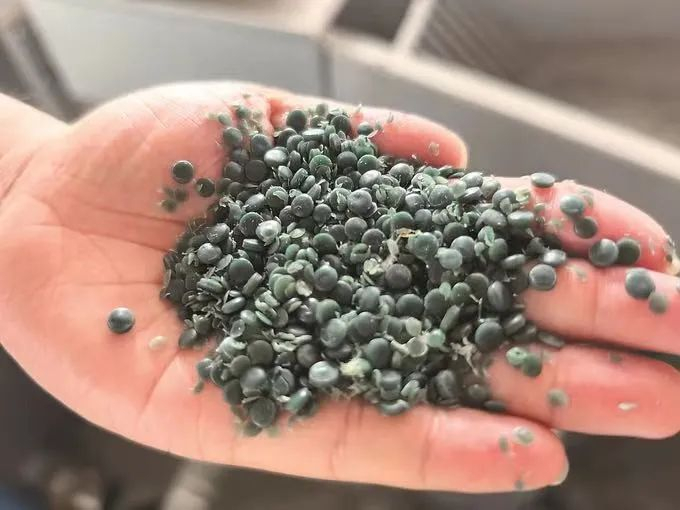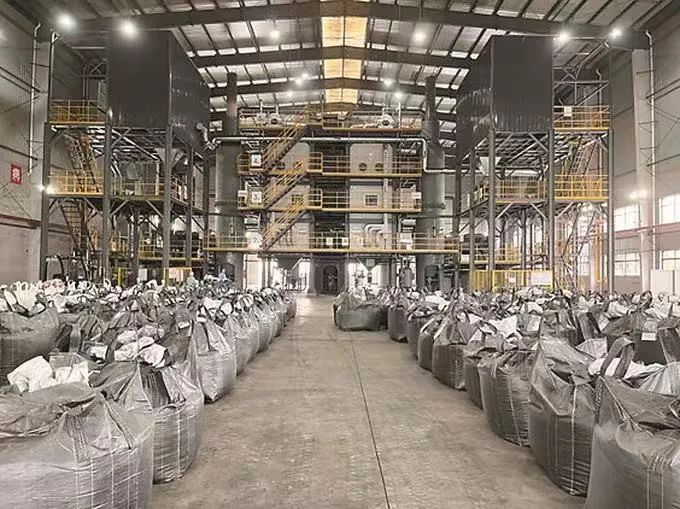Xuzhou, Jiangsu: Old things are "carefully dismantled" and resources are "recycled to generate gold"
"By classifying waste paper well, resources can be effectively utilized and sold at a higher price." At the Fenjie Waste Paper Member Supermarket of China Renewable Xuzhou Resource Regeneration Development Co., Ltd.(hereinafter referred to as "China Renewable Xuzhou Company"), waste paper is divided into 8 categories and 138 varieties. Zhang Xiaofen, the business leader of the waste paper department, opens the Douyin Live broadcast whenever she is free to share common knowledge of waste paper classification.
From waste agricultural film to plastic particles, agricultural waste turns "harm" into "treasure"
In the production workshop of China Renewable Xuzhou Company, waste agricultural film to be treated is piled into a hill. Yu Kaifeng, deputy general manager of the company, said that if left unchecked, this petroleum-based plastic farmland film will take hundreds of years to degrade.
In 2020, Suining County, Xuzhou City, Jiangsu Province, promoted the establishment and improvement of an agricultural film recycling system, and China Renewable Xuzhou Company launched an agricultural waste recycling project. Suining County has established 18 waste agricultural film recycling points within its jurisdiction, covering all local administrative villages. The "Plan for the Recycling and Utilization of Waste Agricultural Film and Pesticide Packaging Waste" was issued at the county level to implement rewards and subsidies for the recycling of pesticide packaging materials according to the quantity and demonstrate and promote the use of degradable mulch films. Today, farmers send waste agricultural film to collection points and can sell it for 2 yuan per kilogram.

The picture shows plastic particles produced from waste agricultural film.
The waste agricultural film at the collection point is sent to the production workshop of China Recycling Xuzhou Company, enters the fully automatic production line, and is finally produced into plastic granules. "After plastic granules are sold to downstream enterprises, they can be produced again as farmland film and continue to be used in farmland to achieve resource utilization." Yu Kai said that these plastic particles can also be produced into plastic products such as seedling containers, pipes, and flower pots. Today, China Renewable Xuzhou Company's agricultural waste recycling project annually processes 17,000 tons of agricultural waste and produces approximately 12,000 tons of recycled plastic particles.
From waste batteries to recycled lead, a closed-loop energy-saving and environmental protection industrial chain is formed
In the Circular Economy Industrial Park in Pizhou City, Xuzhou, the person in charge of the High-tech Zone of Pizhou City said: "The Circular Economy Industrial Park can now allow old batteries to enter and new batteries to come out." The recycled lead produced by the processing and processing of Jiangsu Xinchunxing Renewable Resources Co., Ltd. extends downstream, promoting the development of the lead-acid battery industry chain, connecting with the American Siandi Power Technology Jiangsu Co., Ltd. and Jiangsu Deruibo New Energy Automobile Manufacturing Co., Ltd. and other important node enterprises. Enterprises link up and down, share resources within the park, and complement each other's advantages to "eat and squeeze all" waste lead-acid batteries to create a closed-loop energy-saving and environmental protection industrial chain.
At present, Jiangsu Xinchunxing Renewable Resources Co., Ltd. is upgrading and transforming the technical transformation of the annual processing of 850,000 tons of waste lead-acid batteries, improving equipment automation, process intelligence, and process informatization functions, and achieving cost reduction and efficiency improvement.
From waste activated carbon to recycled activated carbon, carbon dioxide emissions are reduced by 80%
"It can be seen from the 'Smart for Carbon' regulatory platform that more than 400 activated carbon companies were replaced in Xuzhou City in August, the highest value since the system was opened." The data on the 'Smart for Carbon' platform is provided by the accessing companies, and regular reports to the regulatory authorities on early warning warnings for companies that fail to replace activated carbon within the time limit." Fei Rong, assistant general manager of Luyuan Xinbang Renewable Resources Technology Co., Ltd., said that the supervision platform effectively supervises enterprises producing hazardous waste activated carbon in Xuzhou City and reduces pollutant emissions.

Xuzhou Luyuan Xinbang Renewable Resources Technology Co., Ltd. internal saturated waste activated carbon recycling production site
To produce 1 ton of activated carbon, 3 tons of high-quality anthracite coal are needed. Luyuan Xinbang Renewable Resources Technology Co., Ltd. is not only a "green island" for processing industrial waste activated carbon, but also a "big household" in energy conservation and emission reduction. The carbon dioxide emissions generated by enterprises in the process of producing recycled activated carbon are one-fifth of the emissions from the production of new activated carbon. The annual disposal of 20,000 tons of waste activated carbon can save the country 60,000 tons of coal and reduce carbon dioxide emissions by 150,000 tons.
In accordance with the requirements of five major categories of solid waste reduction, resource utilization, and harmlessness, Xuzhou City focuses on the construction of the "four major systems" of system, technology, market, and supervision, and comprehensively exceeds 49 indicators, 72 tasks and 75 projects. In the future, we will continue to improve the level of comprehensive solid waste management and promote the construction of "waste-free cities" to a new level.







